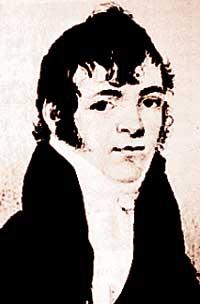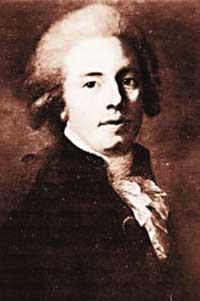Brothers Elhuyar
In search of the remains of the Elhuyar-Zubize family, it is necessary to move to Paris, where Jean and Ursula were married in 1746. Jean, a young couple with medical studies in the city, was the residence of the young couple until she moved to Bilbao for work reasons. In 1753 Jean got a place in Logroño, where the family settled. Therefore, Juan José (June 15, 1754), Fausto Fermin (October 11, 1755) and María Lorentza (August 8, 1757) were born in this city. Mother Ursula died in 1758 and her father married Dominica Elizagai again.

In 1772 his father sent Faust and John Joseph to study in Paris. The first steps were taken at the “Le jardin du Roi” school, where the Elhuyar brothers worked mainly in chemistry and mineralogy.
Then chemistry was immersed in a great revolution. Bismuth, nickel and manganese, for example, were discovered at that time and the new nomenclature was then being applied. The two brothers had the opportunity to learn about works by Lavoisier, Berthollet, Guyton de Morveau, Bergman, Scheele, Werner, etc.
In 1777 and 1778 they began to work in the laboratory of the Royal Seminary of Bergara, but soon the two brothers returned to Europe (Paris, Strasburg, Mannheim, Freiburg, Leipzig, etc.). to learn the latest metallurgical techniques.
After touring Austria and Hungary, in 1781 Juan José went to Sweden and Fausto returned to Bergara, where he had to use a third of his endowment to apply the technique explained by Darcet to a mineral from Saxonia from the tin mines of Zinnwald, on the border of Bohemia and Saxonia. From 1782 he rehearsed with his brother Juan José.
Ore decomposition and extraction of iron and manganese. By treating the resulting residue with nitric acid the white precipitate is obtained. Subsequently, combined with hydrochloric acid, yellow precipitate (tungsten oxide or WO3) was obtained. For its reduction it was crushed and mixed with coal powder on live fire for an hour and a half. A sort of gray button came out. The fingers turned dusty, the larger the size of the needle's head. Wolfram is a chemical element first isolated in the world in Bergara.

For the first time in the General Meeting of Vitoria-Gasteiz of the Royal Society of Friends of the People, formed by Xabier María Munibe and the Knights of Azkoitia, this main discovery was unveiled. The following year and probably written by Fausto, the Academy of Sciences of French Toulouse published the report of the discovery process. It was published in England in 1785, in Germany in 1786 and later in Sweden.
The brothers Fausto and Juan José Elhuyar, mixed with gold, platinum, silver, copper, smelting, etc., tried to obtain tungsten alloys.
Fausto traveled from Bergara to Germany and Hungary to learn the technique devised by Baron Born to deal with mercury silver minerals. He also worked to bring technicians to America. In Vienna on 16 October 1787 he married Juana Raab and that same year he wrote in French Dissertations métarlurgiques, but unfortunately he has not reached us.
Fausto returns to Spain and until 1788 prepares engineers and mining technicians, many Germans. In 1792 he founded the Real Seminario de Minas, the first school of engineers in the country. Joan José also traveled to America to work in the mines of Nueva Granada, in present-day Colombia. During his work he had the opportunity to participate in the botanical expedition of Mutis. He died in Bogotá on September 20, 1796.
When in 1821 Augustine Iturbide, Emperor of Mexico, arrived in America, Faust ceased his post and returned to Spain. He organized the Spanish Directorate General of Mining and began the development of the geological map of Spain. He also studied the Asturian mines.
Director General of Minas and Director of the School of Mines, he died in Madrid on January 6, 1833.
Buletina
Bidali zure helbide elektronikoa eta jaso asteroko buletina zure sarrera-ontzian











